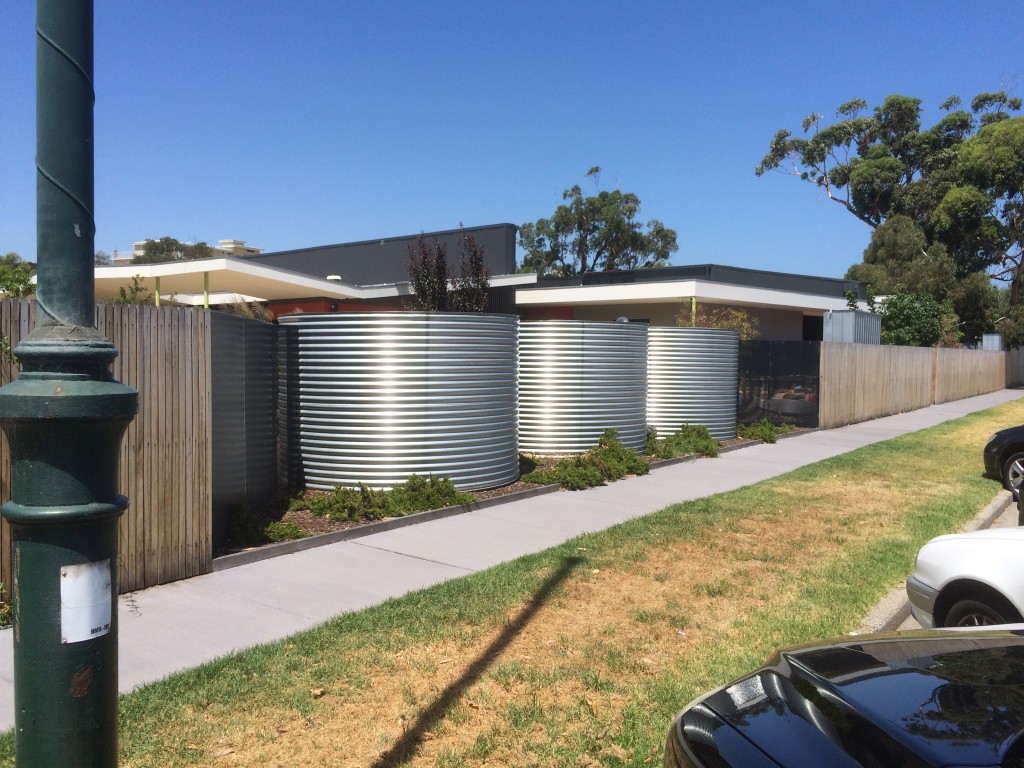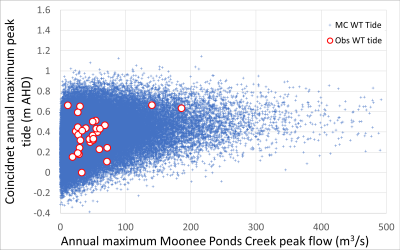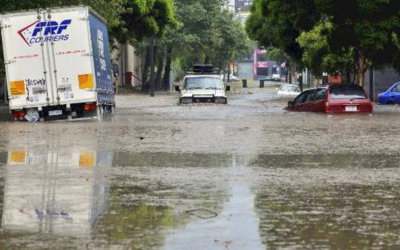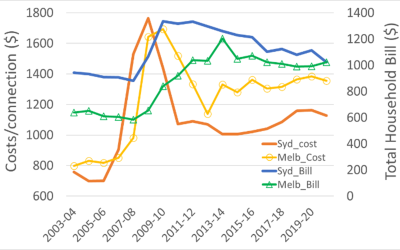Rainwater Health Debate
Michael Smit and Professor PJ Coombes
An important debate in this country is about the health of people using rainwater, however much of the commentary is research funded by water monopolies which has a centralised water distribution perspective quite different to how rainwater harvesting works. One of the recent rebuttal papers by PJ Coombes has just been published and we thought we should discuss some of the issues, as much to demonstrate there is a difference of opinion.
The Coombes presentation at the RHAA seminar in Sydney about widespread use of rainwater and the absence of health epidemics is compelling. Australia has a substantial real world case study with over 2.3 million Australians relying on rainwater for drinking water and more than 6.3 million people using rainwater for some household use. In spite of claims of widespread health concerns, there are no health epidemics or widespread notifications of lead contamination by chief medical officers.
Link to RHAA presentation: RHAA_presentation
Two rebuttals were published by PJ Coombes in the Australian Journal of Water Resources of a publication entitled “Influence of roofing material and lead flashing on rainwater tank contamination by metals” by Magyar et al (2014) that proposed widespread lead contamination of rainwater tanks.
Firstly, we are in complete agreement about the use of lead flashing, there is very good evidence that lead flashing is damaging to rainwater quality and should not be used on roofs that collect rainwater for drinking water. As the main thrust of the original paper that point is fully supported, although it had already been addressed by building controls before the research was carried out, there may be home owners who are not sufficiently aware of this point. Where lead flashing is on a roof used for rainwater harvesting for drinking water than that should be removed as a priority.
However if the proposition is that there are high levels of lead in rainwater tanks without lead flashing, then we would like to have a further discussion.
In the response to the first Coombes rebuttal, Ladson and Magyar presented further information in the form of a metadata table of six studies and stated that based on those studies 23% of urban rainwater tanks are considered to have lead contamination. Frankly, that is a big statement. As previously stated there are 2.3 million Australians who drink rainwater and we are not hearing widespread reports of personal lead contamination.
So are there any unusual features of the six selected studies? They were carried out by different authors, the funding for the research is not disclosed and they all made similar findings. We would have to ask the question, where the results corrected for lead flashing? If the studies were not corrected for lead flashing than is it appropriate to draw the wider conclusion about lead contamination from roofs without lead flashing?
By contrast other, larger, longitudinal studies, carried out when the potential for lead contamination was considered higher, only rarely found lead contamination. Ladson and Magyar appear to have made an error in claiming that Morrow (2007) reported 7.8% of water samples exceeded the ADWG guidelines, a single incident is not considered exceedance of the guidelines. This is worrying because it raises the question of whether the guidelines were also incorrectly applied in the original publication and the six reference studies. The Coombes studies are highly relevant here, a number of the Coombes studies are based on an old inner city residence in an industrial area that does not show significant lead contamination, as well as studies on over a thousand tanks in many parts of Australia over the last 15 years which rarely show lead contamination.
The discussion also highlights an interesting point about sludge. On the one hand Ladson and Magyar see sludge as a source of contamination whereas Spinks and Coombes see sludge as a key part of the treatment train protecting rainwater quality. A decade of independent research has discovered and confirmed the rainwater treatment train that includes the natural processes of flocculation, settlement, biofilms (including the sludge) and competitive exclusion of bacteria (where more resilient environmental bacteria eliminate more fragile potential pathogens). So is the quality of rainwater poor because lead and other contaminants might be found in the biofilm layer known as sludge? The answer is no because the biofilm is highly effective at removing lead and other contaminants from the water column. This research highlights that the sludge layer is held together by sticky polysaccharides common to biofilms and it should not be disturbed by regular cleaning (for example). The use of leaf diverters and mesh screens improves this natural treatment train by excluding sediments and debris from the storage.
For context, applying the assumptions made about sludge in rainwater to mains water distribution networks may result in claims that our mains water supplies are not safe because all pipes and balancing storages contain sludge or biofilm layers that capture contamination.
Another underlying assumption is that rainwater quality in country and urban areas are very different. Intuitively this is quite an attractive assumption, however national longitudinal studies do not indicate significant differences. For example Morrow (2012) considered more than 500 samples in South East Australia (SA, Vic, NSW, QLD) and found lower concentrations of lead and copper in urban areas than in industrial and rural areas. Similarly Evans (2010) found higher levels of bacteria in rural areas than urban areas and indicator bacteria (not pathogens) were only present at low frequency and low abundance in rainwater supplies. This is highlighted by the more than 111,100 households in capital cities that are solely reliant on rainwater supplies without widespread health problems.
There are three interesting points about sampling The original Ladson and Magyar publication noted that rainwater tank water was taken from the tap on the tank and this is a key point. But results for rainwater quality will be different at different points on the rainwater harvesting process, from gutter, to tank, to tap. Sampling at the gutter or at the water surface in a tank is almost meaningless in this context as that is not what people are drinking and there is a treatment train occurring within the rain harvesting system. Again, applying a similar logic to mains water supplies and basing assumptions about water quality on inflows to dams could result in closure of mains water supplies for assumed health reasons. Secondly the use of Polymerase Chain Reaction analysis must be verified by independent testing as Coombes found it to be highly vulnerable to sampling and interpretation errors. Thirdly sampling should be consistent with final use, it is disingenuous for example to sample a disused garden rainwater tank and then apply those results to assumptions about drinking water health.
Link to PJ Coombes second rebuttal: Second rebuttal or Response to Reply by AR Ladson and MI Magyar
Response by Ladson and Magyar: Ladson&MagyarResponse
Link to PJ Coombes first rebuttal First rebuttal or Coombes_DiscussionPaper
Finally, all the authors propose that there is a real benefit in ensuring design, maintenance and management of rainwater harvesting systems should be evidence based, fit for purpose, with adequate protocols for design and management. All the stakeholders in this discussion may be pleased to know the Rainwater Harvesting Association of Australia has made these protocols a major component of their work for 2016-17.






